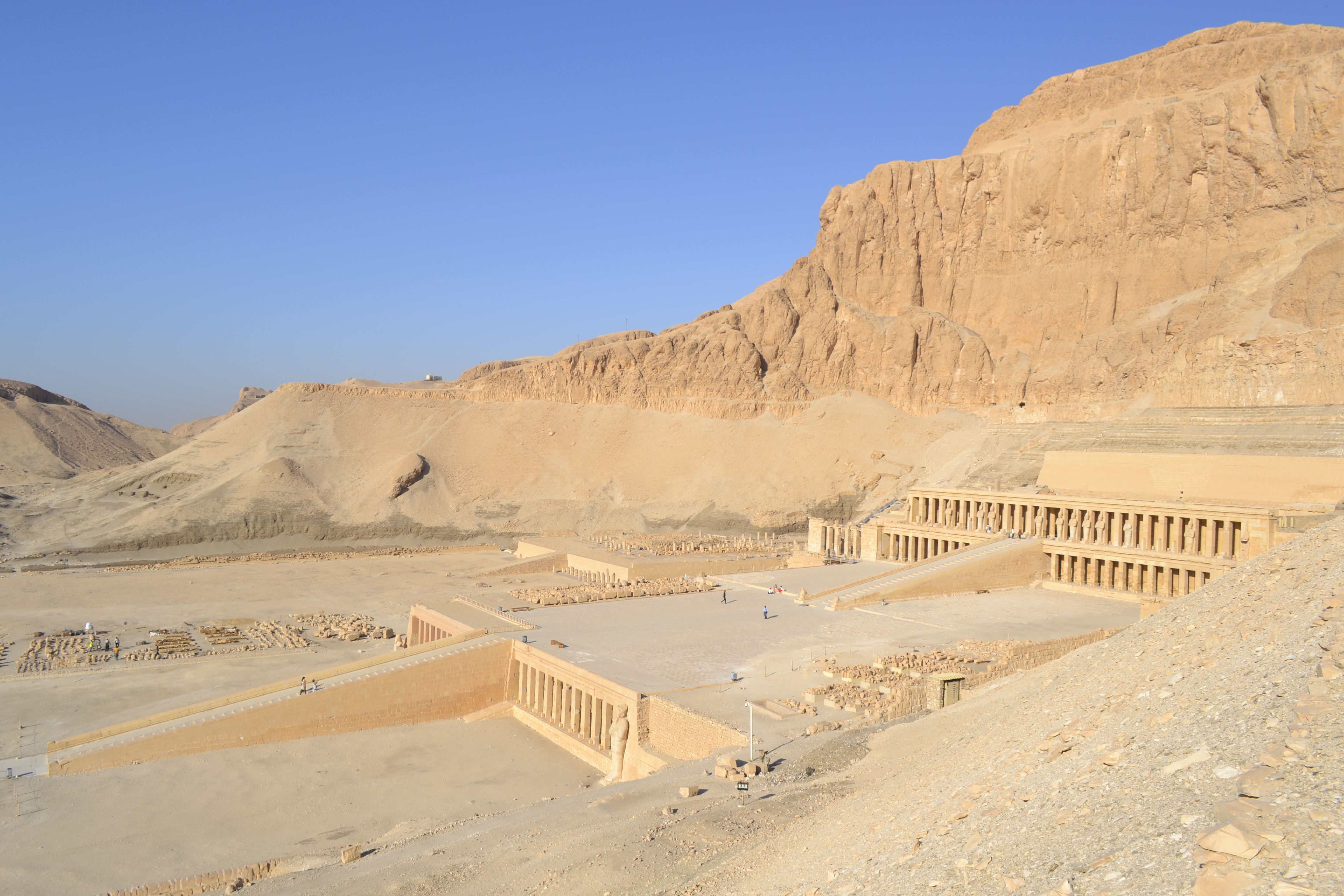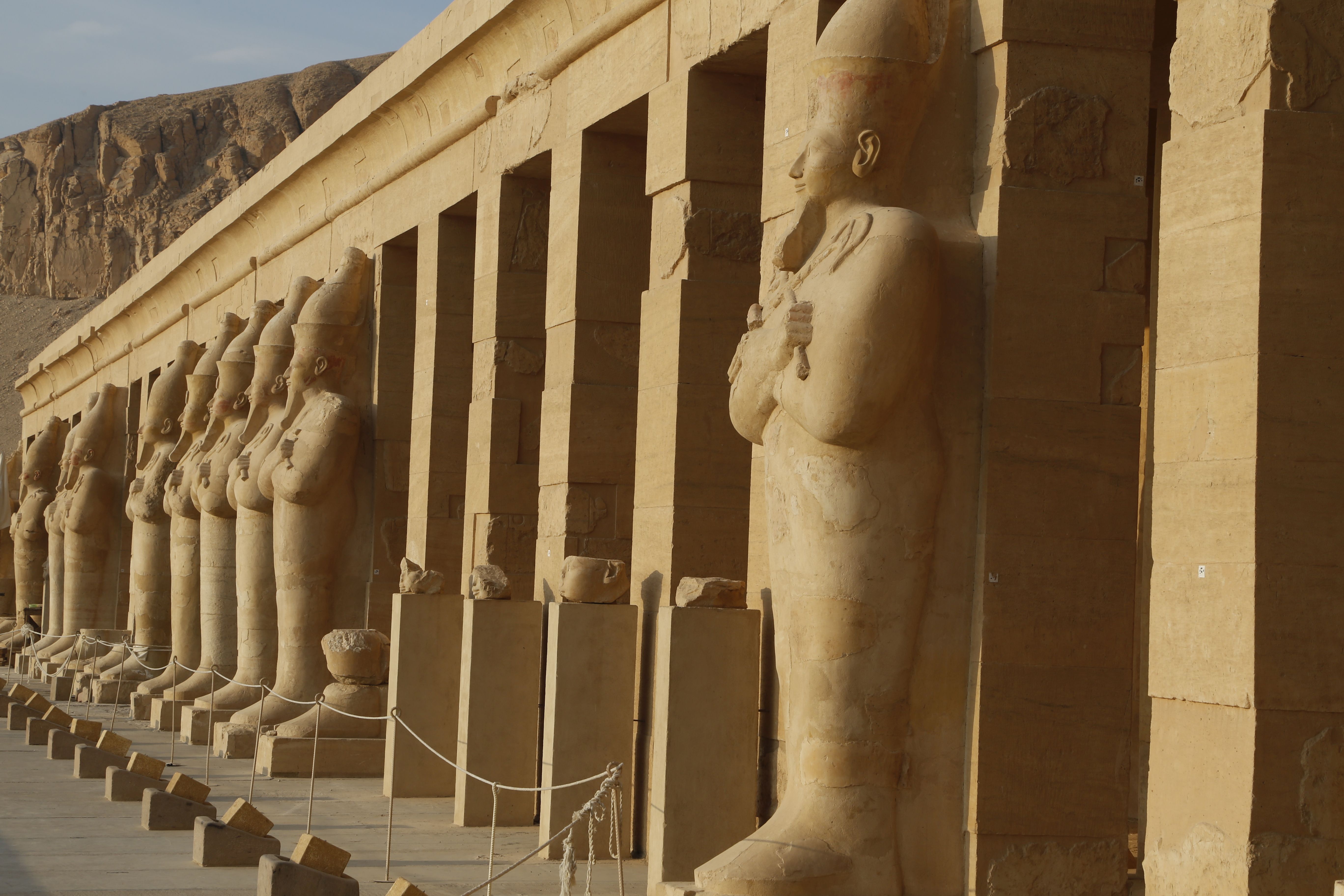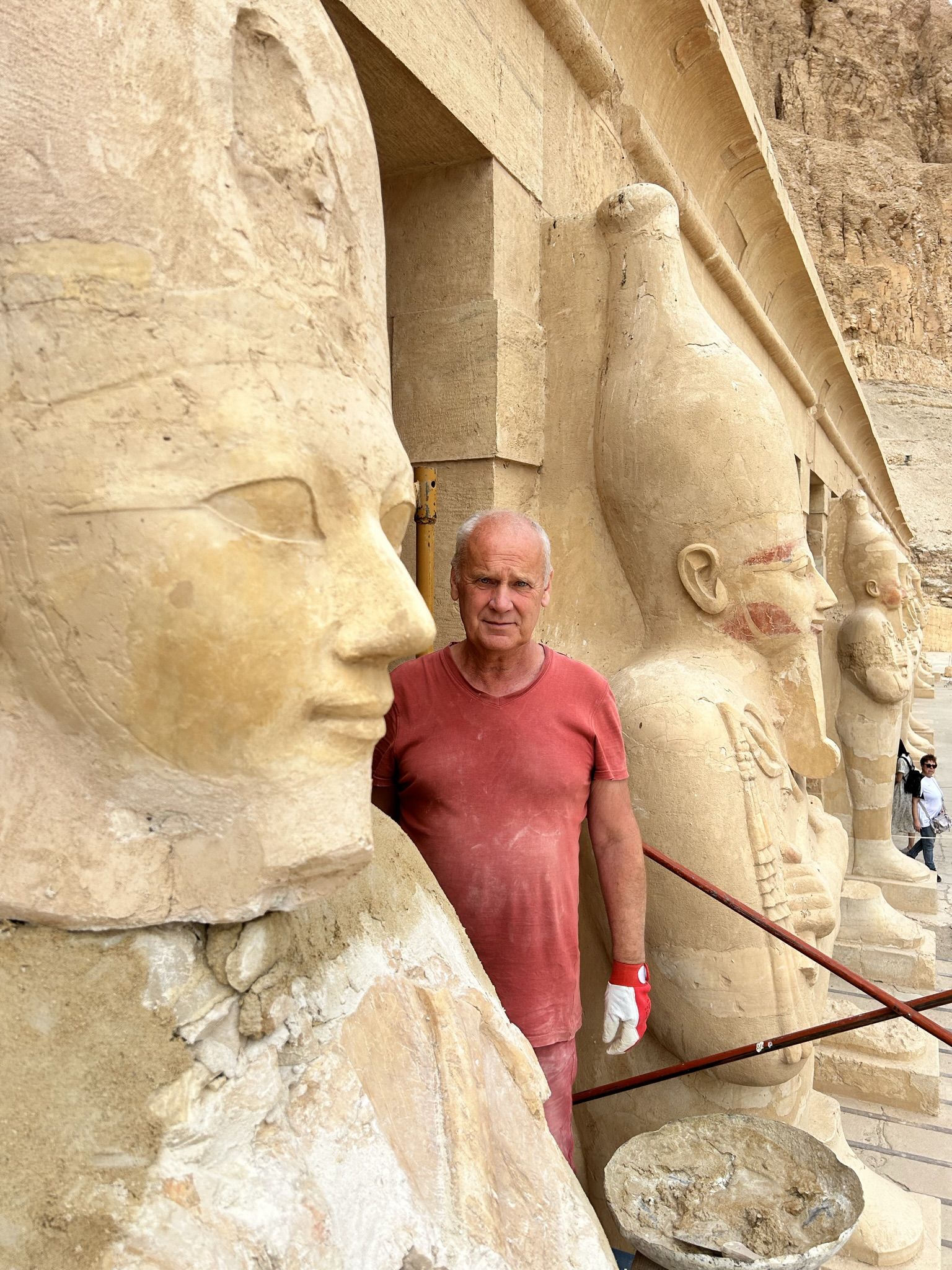Egypt/ Poles reconstruct famous statues from the Temple of Hatshepsut

Poles have already reconstructed over 20 sculptures that are a symbol of the famous temple of Hatshepsut near Luxor, in Upper Egypt. These are both sphinxes and so-called Osiriacs. They are one of the greatest tourist attractions and most frequently photographed objects in Egypt - archaeologist Dr. Patryk Chudzik told PAP.
The Temple of Hatshepsut at Deir el-Bahari on the west bank of the Nile is considered one of the most magnificent monuments of ancient Egyptian architecture. Deir el-Bahari is located in the heart of the vast royal necropolis, which is visited by millions of tourists from all over the world every year. The building was erected in the 15th century BC at the foot of the high cliffs of the Deir el-Bahari rock amphitheatre, making it one of the most beautifully situated monuments in the ancient world.
The temple itself consists of three terraces, accessed by centrally set ramps. In addition to scenes from the life of the female pharaoh, the temple features statues depicting Hatshepsut. Among them are primarily sculptures of sandstone sphinxes and the so-called Osirian statues made of limestone, depicting the female pharaoh Hatshepsut as the god Osiris.

The sculptures that can currently be seen in the Temple of Hatshepsut are the result of many years of work by Polish conservators and archaeologists. During excavations, they discover subsequent fragments of sculptures and then combine them, recreating the likenesses of the famous woman on the throne of the pharaohs.
"Photos showing the Osirian statues of Hatshepsut can be seen all over Egypt - in airport halls, in the Cairo metro and on billboards in the country's capital. These statues, reconstructed by a member of our expedition, sculptor Wojciech Myjak, are today not only the most recognizable element of the Hatshepsut temple, but also a symbol of tourism on the Nile," Dr. Patryk Chudzik, archaeologist from the Centre of Mediterranean Archaeology of the University of Warsaw, told PAP.
Depictions of Hatshepsut were destroyed in ancient times. A little over 20 years after her death, King Thutmose III ordered the destruction of all depictions of Hatshepsut as a female king. This led to all of her statues being smashed with hammers and many of her relief representations being chiseled away.

"It was only modern archaeological excavations that led to the discovery of many fragments of these sculptures. An American expedition from the Metropolitan Museum of Art in New York, working in this area a hundred years ago, came across several deposits of such shattered statues and collected them in wooden boxes. When the Polish-Egyptian expedition from the Centre of Mediterranean Archaeology of the University of Warsaw began its work in the Temple of Hatshepsut in 1961, further fragments of sculptures were discovered. Such discoveries are still made today, when we conduct excavations in various parts of the temple. These fragments are then documented and their original location in the statues is analyzed. Once the reconstruction project is prepared, we then proceed to connect the selected fragments," the archaeologist explained.
Originally, there were many of these statues in the temple. In addition to the sculptures that were placed in chapels in different parts of the temple, its processional avenue, running from the east, was flanked by pairs of sandstone sphinxes, of which there were between 72 and 76. Then, after entering the lower courtyard, one could see two colossal statues of Hatshepsut in the form of the god Osiris. Visible from afar, on the other hand, was a row of Osirian statues placed at the pillars of the upper porticoes, which today are one of the greatest tourist attractions of the temple.
Reconstruction of such a statue takes about 3-4 months and is done without the use of any heavy equipment. Although the expedition members use reels and levers, the transport and placement of subsequent fragments in their final location is done only using human muscle power.
Currently, the Polish expedition is working on the reconstruction of the last of the Osirian statues of Hatshepsut. As Dr. Chudzik points out, the currently available fragments allow for this, but it cannot be ruled out that subsequent excavation seasons will provide new materials and allow for the resumption of this project. And although the Polish expedition's warehouses still contain many fragments of limestone sculptures, they constitute less than 80 percent of their original surface, which is the accepted minimum for taking action.
The author of the reconstructed Osirian statues at the pillars of the third terrace and the two colossi of Hatshepsut in the lower courtyard is Wojciech Myjak. In addition to him, employees and students of the Department of Conservation and Restoration of Works of Art of the Academy of Fine Arts in Warsaw are also working on the reconstruction of the sculptures in the Hatshepsut temple.

The work of the Polish-Egyptian Archaeological and Conservation Expedition at the Temple of Hatshepsut in Deir el-Bahari is carried out in cooperation with the Centre of Mediterranean Archaeology of the University of Warsaw and the Egyptian Ministry of Tourism and Antiquities.
More information about the work of Polish archaeologists and conservators in the Temple of Hatshepsut in Deir el-Bahari can be found on the expedition fanpage and on the website of the Centre of Mediterranean Archaeology of the University of Warsaw.
Science in Poland, Ewelina Krajczyńska-Wujec (PAP)
ekr/ bar/
The PAP Foundation permits free reprinting of articles from the Nauka w Polsce Service, provided that you inform us by e-mail once a month about the use of the service and provide the source of the article. In portals and internet services, please include the linked address: Source: naukawpolsce.pl, and in journals the annotation: Source: Nauka w Polsce Service - naukawpolsce.pl. The above permission does not apply to: information from the "World" category and any photographs and video materials.
naukawpolsce.pl





